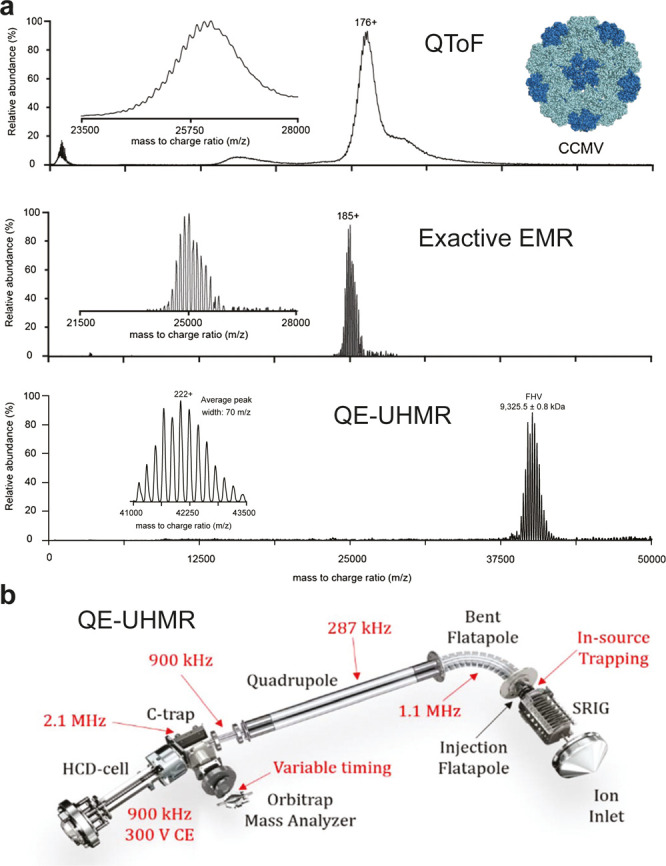Figure 1.

Advances in mass resolving power for the analysis of viruses by native mass spectrometry. (a) Native mass spectra of the 4.6-MDa intact Cowpea chlorotic mottle virus (CCMV) virions and 9.3 MDa Flock House virus (FHV) acquired with several platforms for native MS. (Top) Mass spectrum acquired using a quadrupole time-of-flight (QToF) instrument. A single series of partly resolved charge states can be observed. (Middle) Spectrum acquired for the sample on an Orbitrap EMR with extended mass range, displaying clearly baseline resolved ion signals. (Bottom) Intact FHV analyzed on an QE-UHMR instrument. The native mass spectrum of FHV, detected at 42 000 m/z shows baseline resolved charge states at a resolution of approximately 600. (b) Schematic of the Q-Exactive UHMR Orbitrap mass spectrometer indicating the various ion optic modifications made to enable the analysis of intact viruses in red. Adapted with permission from van de Waterbeemd, M.; Snijder, J.; Tsvetkova, I. B.; Dragnea, B. G.; Cornelissen, J. J.; Heck, A. J. R. 2016 Examining the Heterogeneous Genome Content of Multipartite Viruses BMV and CCMV by Native Mass Spectrometry. J. Am. Soc. Mass Spectrom.27(6): 1000–1009 (ref (25)). Copyright 2016 American Chemical Society. Adapted by permission from Macmillan Publishers Ltd.: Nat. Methods, van de Waterbeemd, M.; Fort, K. L.; Boll, D.; Reinhardt-Szyba, M.; Routh, A.; et al. 2017 High-fidelity mass analysis unveils heterogeneity in intact ribosomal particles. Nat. Methods, pp. 1–7 (ref (30)). Copyright 2017. Fort, K. L.; Van De Waterbeemd, M.; Boll, D.; Reinhardt-Szyba, M.; Belov, M. E. et al. 2018 Expanding the structural analysis capabilities on an Orbitrap-based mass spectrometer for large macromolecular complexes. Analyst. 143(1): 100–105 (ref (31)). Reproduced by permission of The Royal Society of Chemistry.
